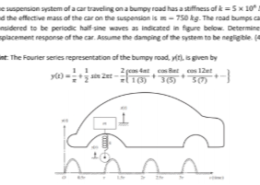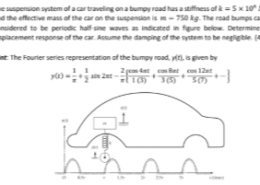Question: We have two independent investments. Each of them may have a 1% chance of a loss of 10 million dollars, a 2% chance of a loss of 5 million, a 3% chance of a loss of 1 million, and a 94% chance of a profit of 1 million. The VaR(0.95) for each single investment is………. The Var(0.98) for each single investment is………. The ES(0.95) for each single We have two independent investments. Each of them may have a 1% chance of a loss of 10 million dollars, a 2% chance of a loss of 5 million, a 3% chance of a loss of 1 million, and a 94% chance of a profit of 1 million. The VaR(0.95) for each single investment is………. The Var(0.98) for each single investment is………. The ES(0.95) for each single investment is …………. What is the Var for a portfolio consisting of the two investments when the confidence level is 95%? What is the expected shortfall for a portfolio consisting of the two investments when the confidence level is 95%?
ReportQuestion
We have two independent investments. Each of them may have a 1% chance of a loss of 10 million dollars, a 2% chance of a loss of 5 million, a 3% chance of a loss of 1 million, ...
![Hot lubricating oil is cooled by exchanging heat with water in a L = 8 m length double pipe heat exchanger. The heat exchanger consists of an inner pipe (with an inner diameter Di) and an outer pipe (with an outer diameter Do) (see Figure 3). The oil (heat capacity 𝐶𝑝,𝑜 = 2090 J kg-1 K-1) flows through the inner pipe at a rate of 𝑚̇ 𝐻 = 0.75 kg s-1 , enters and leaves the heat exchanger at 𝑇𝐻1 = 450 K and 𝑇𝐻2 = 350 K, respectively. Water (heat capacity 𝐶𝑝,𝑤 = 4177 J kg-1 K-1) flows through the annulus, enters the heat exchanger at 𝑇𝐶1 = 298 K at a flow rate of 𝑚̇ 𝐶 = 0.8 kg s-1 . The overall heat transfer coefficient from the oil to the water based on the inner surface of the inner pipe is U = 280 W m-2 K-1 . Figure 3: lubricating oil and water double pipe heat exchanger. (a) By neglecting the heat loss and by considering steady state, calculate the heat transfer rate from the oil to water, 𝑄 ̇ . [2 marks] (b) Determine the outlet water temperature 𝑇𝐶2 . [3 marks] PLEASE TURN OVER CP204/208 Fluid Flow and Heat Transfer Page 8 of 8 (c) For a countercurrent arrangement of the heat exchanger, compute the inner diameter of the inner pipe, Di . [5 marks] (d) For a co-current arrangement of the heat exchanger, compute the inner diameter of the inner pipe, Di . [5 marks] (e) After the heat exchanger was used for long time, it was turned off to allow the external surface of the heat exchanger to cool down. The heat transfer coefficient at the external surface is h = 12 W m-2 K-1 , the external diameter of the outer pipe is DO = 1 m, the mass of the outer pipe is mO = 10 kg, the heat capacity of the material of the outer pipe is Cp,pipe = 850 J kg-1 K-1 . Considering the ambient temperature T0 = 298 K and assuming that the outer pipe has the same temperature with the water outlet temperature TC2, calculate how long time does it need to cool the external surface from TC2 to Tfinal = 300 K.](https://numengineering.com/wp-content/uploads/2024/12/Screenshot-2024-12-10-212242-260x185.png)
![A hollow insulating sphere of a material with thermal conductivity kA has internal diameter D1 and external diameter D2. An electrical heater is located in the hollow, such that there is heat flow by conduction through the wall of the sphere. (a) Perform an energy balance over a thin spherical shell of inner radius r and outer radius r + dr, when the system is at steady state. [2 marks] (b) Solve the differential energy equation from part (a) and derive an expression for the rate of heat transfer by conduction through the wall, with the temperature at the internal surface T1, and temperature at the external surface T2. [5 marks] (c) Consider the case of internal diameter D1 = 8 cm and external diameter D2 = 15 cm. The thermal conductivity of the insulating material is kA = 0.2 W m-1 K-1. An electrical heater of power 20 W is switched on, and eventually steady-state is achieved. The external surface of the sphere is in contact with ambient air at temperature Ta = 20 ºC and winds at velocity va = 30 km h -1. For the properties of air, assume density ρ = 1.2 kg m−3 , dynamic viscosity µ = 1.8×10−5 Pa s, thermal conductivity ka = 0.026 W m−1 K−1 , and heat capacity Cp = 1000 J kg−1 K−1 . To estimate the convective heat transfer coefficient h for a sphere, use the correlation: 𝑁𝑢 = 2 + (0.4𝑅𝑒1/2 + 0.06𝑅𝑒2/3)𝑃𝑟0.4 . (c-i) Calculate the value of the heat transfer coefficient (h) for forced convection from the external surface to the ambient air. [8 marks] (c-ii) Calculate the temperature at the external surface (T2). [2 marks] (c-iii) Calculate the temperature at the internal surface (T1). [4 marks] (c-iv) If the heater power is doubled to 40 W, estimate the new external surface temperature (T2,new) and internal surface temperature (T1,new).](https://numengineering.com/wp-content/uploads/2024/12/Screenshot-2024-12-10-195436-260x185.png)
![A vessel contains 1000 kg of a liquid with a specific heat capacity 4.0 kJ kg-1 K-1. The vessel is heated with steam at 393 K which is fed to a coil immersed in the stirred liquid. The surface area of the coil is 0.5 m2 , and the overall heat transfer coefficient to the liquid is 600 W m-2 K-1. Heat is lost from the external surface of the vessel to its surroundings, which is at 293 K. The external surface area of the vessel is 6 m2 , and the heat transfer coefficient to the surroundings is 10 W m-2 K-1 . (a) What is the maximum temperature to which the liquid can be heated? [5 marks] (b) How long does it take to heat the liquid from 293 K to 353 K? [15 marks] (c) When the liquid temperature has reached 353 K, the steam supply is turned off for 2 hours, and the vessel cools. If the steam supply is then turned back on again directly after this cooling period, how long will it take to reheat the liquid to 353 K?](https://numengineering.com/wp-content/uploads/2024/12/Screenshot-2024-12-10-190730-260x185.png)


